Caddy-Jet
After a long time of silence here’s a small update to my web site. It’s not that I lost my interest in gas turbine engines, no, actually it’s the complete opposite -- I’m more and more involved in turbine engine design and consulting in this field, so there’s simply too little spare time to spend on my web site. Meanwhile I traded my Ru19A-300 for a RR Gnome H-1200 (unfortunately less starter, so if you’ve got one to spare, I would be very happy if you drop me a note...). But just yesterday (8. April 2006) I met with a very remarkable individual not too far away from me - his name is Willy H. Müller. He found a very peculiar application for an Ru19A-300 and I just want to share my impressions with you:
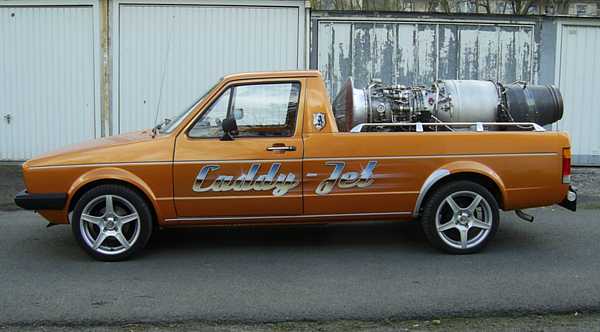 |
Isn’t this a really amazing machine? I think all cars should look like this one! It appears that the VW “Caddy” is a very good platform for conversions like this, since another individual (Adrian Bennett of UK, http://www.jetpower.co.uk), built something similar, yet with a different turbine engine. To the best of my knowledge, Adrian and Willy aren’t aware of each other’s projects. Yet, the Ru19 that powers Willy’s Caddy-Jet provides probably more than twice the thrust of the coverted RR Gnome gas generator that Adrian utilises (which should still be powerful enough). Here are some more photos:
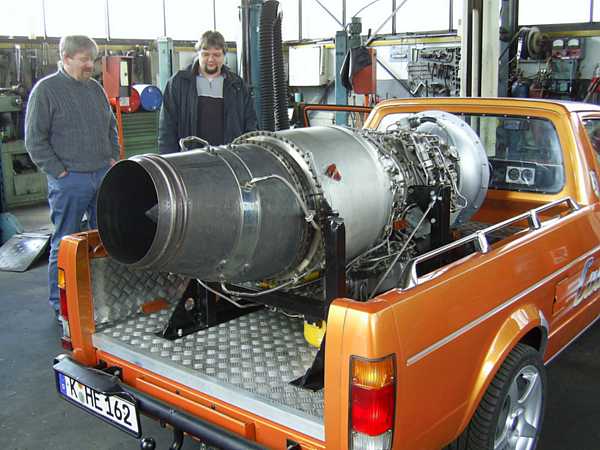 |
Two turbine addicts in discussion, left Willy and right myself. That’s one of my favorite views of the Caddy-Jet. It’s really a marvellous piece of work that Willy has done. The best thing about it: The car is street legal -- that is, as long as it is powered by the original reciprocating engine that’s still left in. Since Willy owns a garage and hence is very experienced with everything about automobiles and motorcycles, he arranged the conversion to meet the quite strict German regulations.
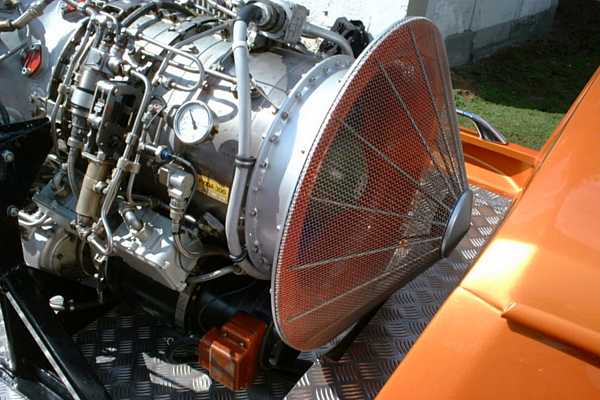 |
Look at this beautiful bellmouth intake with FOD screen that he had specifically made to smooth out the airflow into the engine compressor and to protect the engine from debris.
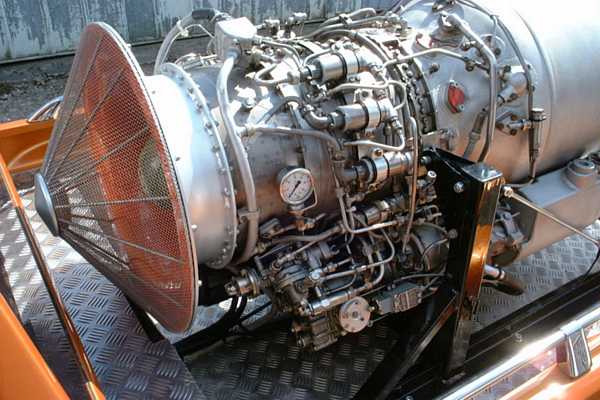 |
Another view of the compressor/intake section with the fuel control below. The round disc visible close to the mounting strut is the throttle control of the engine. It is operated by two steel Bowden wires which are linked to a throttle lever in the cockpit:
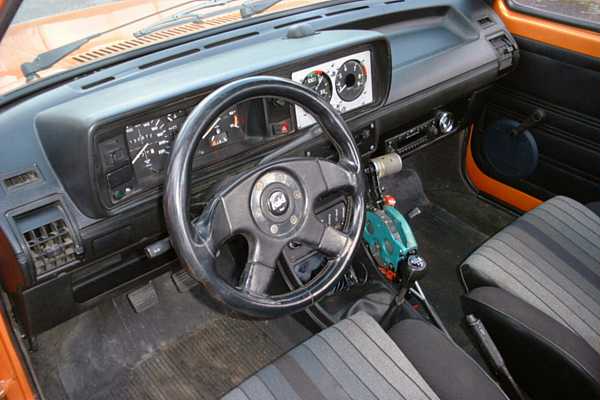 |
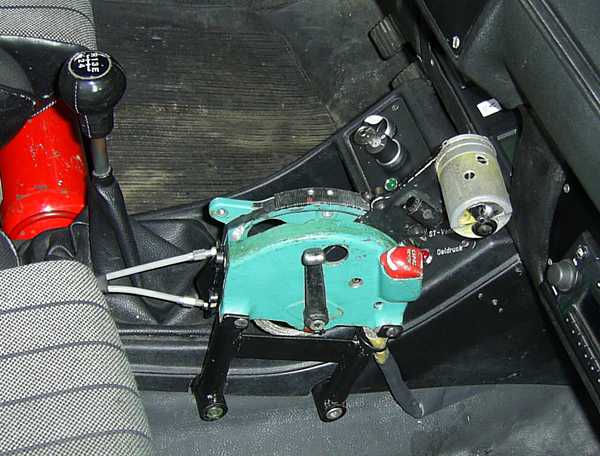 |
This control lever had been “borrowed” from a Russian MiG aircraft...
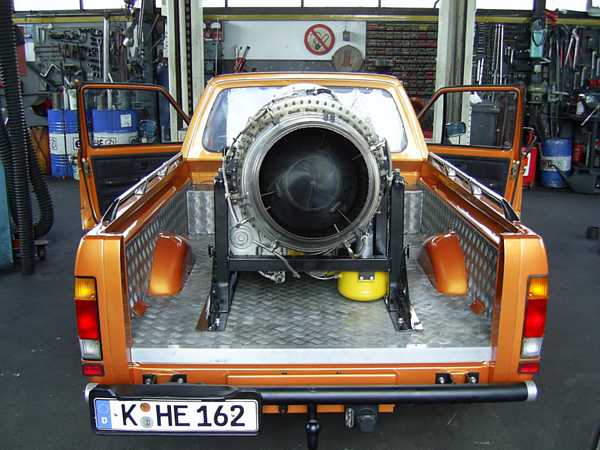 |
...better don’t stand here when the engine’s running...
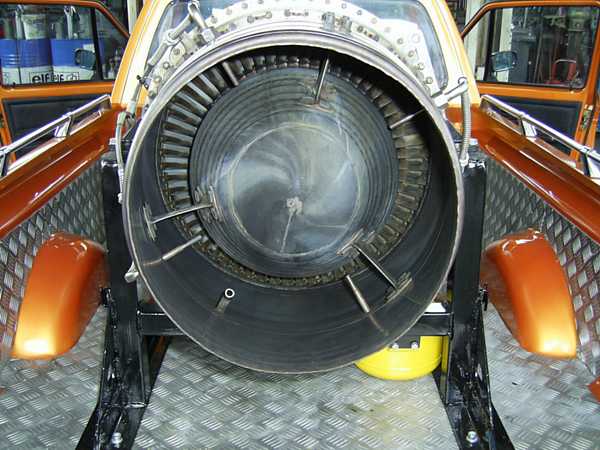 |
The business end of the Ru19A-300 turbojet is quite impressive!
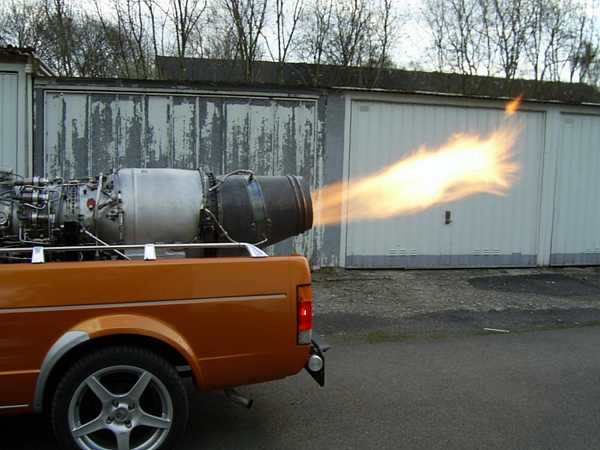 |
And even more so when the Russian bear inside is brought to life. Willy told me and my friend Jürgen who joined me on the trip to Willy’s place that we wouldn’t need to put on our ear defenders, the engine won’t be that noisy. Well, well, we should have known better (actually I did, I had my ear defenders with me and stood at considerable distance in front of the Caddy Jet), but Jürgen took this photo without any protection...
The power of the engine is really impressive. The intensity of noise and power produced by a turbojet like this is something that cannot be recorded in any way to give it full justice, you simply have to experience it yourself. I recorded a short video clip of the run of the engine and despite that the camera has almost been blown over and its microphone had a really hard time with the noise level, it is still pretty impressive. Even more so since the I placed the camera well off the jet efflux of the engine, but the eddies produced on the ground were so powerful one could see small “tornados” forming still at considerable distance from the car.
Willy had the engine up to 90% of rated RPM, if he opens up the throttle any further, the brakes of the car wouldn’t be able to keep it on-spot. Or maybe the friction between the tyres and the tarmac would be too low. At least he told me, the car would start moving if he pushed it further to the limit. But enough of me talking, here’s the video clip:
And here’s a nice decal (Luftwaffe 1/JG 400) that Willy painted on his car. Riding this mean machine surely feels like being “Münchhausen” on his cannonball...
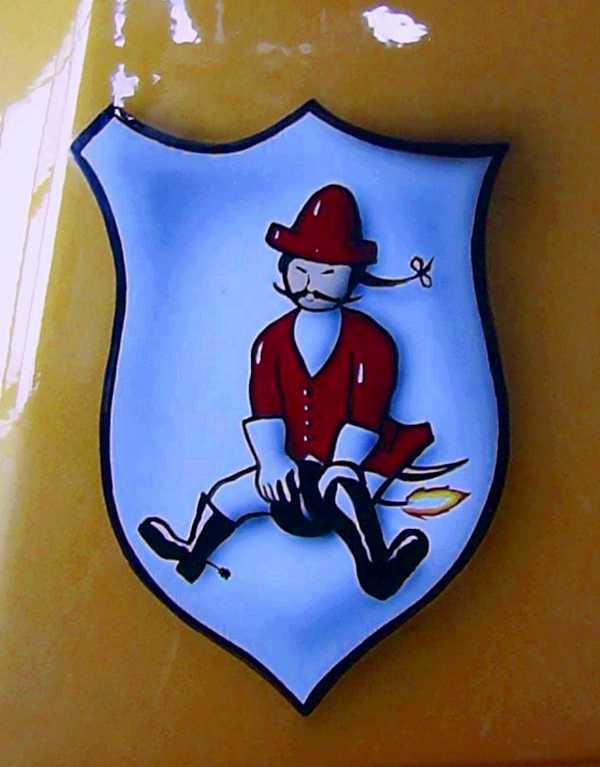 |
Willy has got several of the Ru19A-300 engines available for similar projects and he’s also got the experience how to operate these turbines safely. The engines wouldn’t be available at a bargain but for a serious project, the price will be reasonable. So if somebody is interested in one of these units, he may contact Willy via email: wiheimue(at)arcor(dot)de .